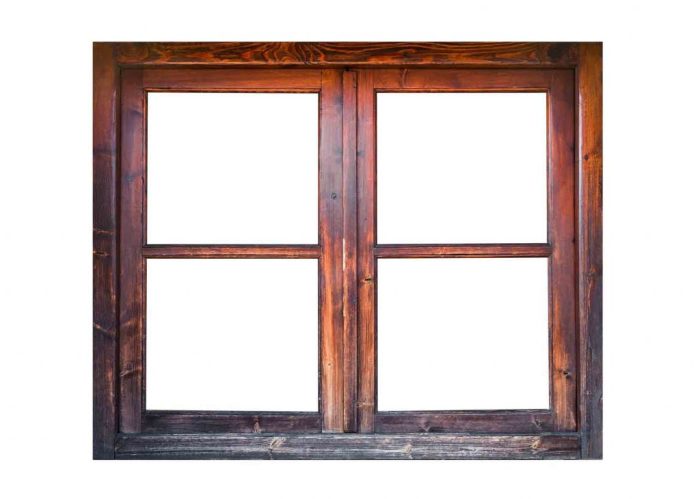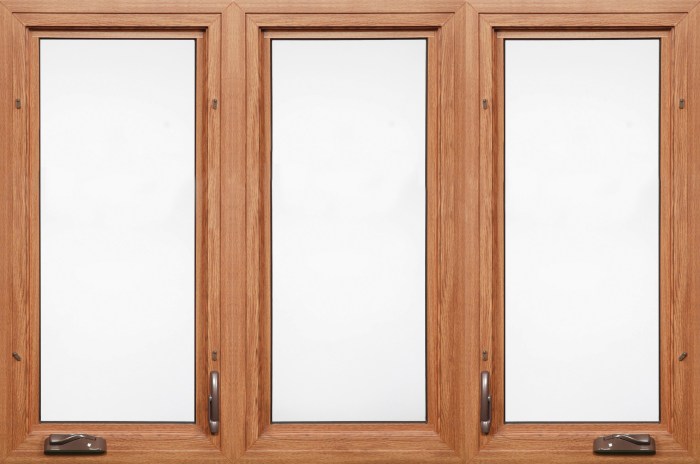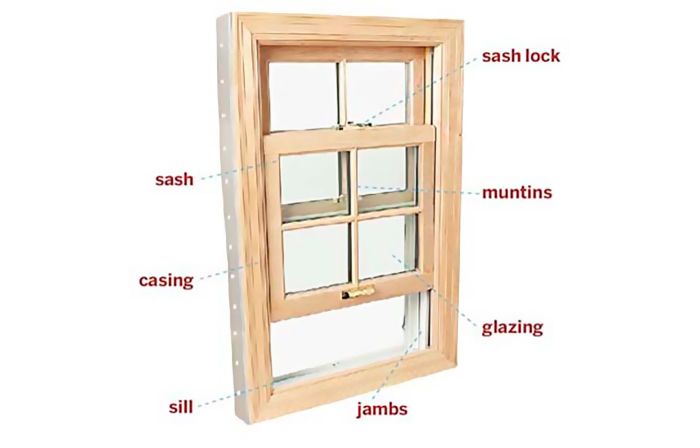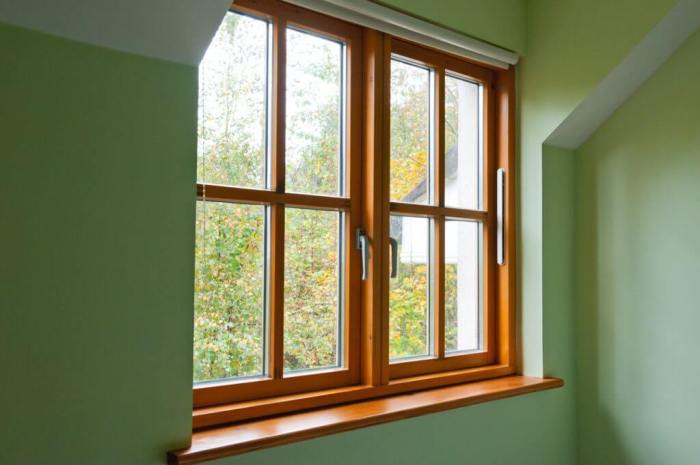From stately mansions to cozy cottages, wooden window frames have graced homes for centuries, a testament to their enduring appeal and inherent warmth. Their craftsmanship, a blend of art and engineering, speaks volumes about the connection between human ingenuity and the natural world. But beyond aesthetics, the choice of wood, the construction techniques, and the maintenance practices all significantly influence the longevity, performance, and environmental impact of these architectural elements.
This exploration delves into the science and artistry behind wooden window frames, examining their diverse types, manufacturing processes, design aesthetics, installation, maintenance, and environmental considerations.
The journey begins with an examination of the various wood species employed, each possessing unique properties affecting durability, cost, and visual impact. We’ll then dissect the intricate manufacturing process, from lumber selection to the precise joinery techniques that hold the frame together. A discussion of design aesthetics, including traditional, modern, and rustic styles, will showcase the versatility of wood as a building material.
Finally, we’ll address crucial aspects like installation, maintenance, and the environmental implications of choosing wooden window frames, providing a holistic perspective on this timeless architectural feature.
Types of Wooden Window Frames
Wooden window frames offer a timeless blend of aesthetic appeal and durability, but the choice of wood significantly impacts the longevity and maintenance of these windows. Different species possess unique properties influencing their suitability for exterior applications. Understanding these properties is crucial for making an informed decision.
Wood Species and Their Properties
The selection of wood for window frames is a critical factor determining their performance and lifespan. Several factors, including durability, cost, and aesthetic appeal, must be considered. The following table summarizes the characteristics of some popular wood types.
| Wood Type | Durability | Cost | Aesthetic Appeal |
|---|---|---|---|
| Pine | Moderate; susceptible to rot and insect damage if not properly treated. | Low to Moderate | Versatile; readily accepts paint and stain; offers a classic, clean look. |
| Oak | High; naturally resistant to decay and insects; very strong and durable. | High | Rich, warm tones; prominent grain pattern; lends a sense of sophistication and elegance. |
| Mahogany | High; naturally resistant to decay and insects; very strong and durable; excellent weather resistance. | High | Deep red-brown hues; fine, even grain; luxurious appearance; highly prized for its beauty. |
| Cedar | High; naturally resistant to decay and insects; contains natural oils that repel moisture. | Moderate to High | Rich reddish-brown tones; pleasant aroma; often used for its natural beauty and weather resistance. |
| Douglas Fir | High; strong and durable; relatively resistant to decay and insects with proper treatment. | Moderate | Straight grain; can be stained or painted; offers a more rustic appearance than pine. |
Weather Resistance and Maintenance
The weather resistance of wooden window frames is directly related to the wood species and the application of protective finishes. Woods like mahogany and cedar naturally contain oils and resins that offer inherent resistance to moisture and decay. However, even these species benefit from regular maintenance, including repainting or restaining every few years to prevent weathering and prolong their lifespan.
Pine, while less naturally resistant, can achieve comparable durability with proper treatment and regular maintenance. Untreated pine, however, is prone to warping, cracking, and insect infestation. Regular inspections for signs of damage are crucial for all wood types, enabling timely repairs and preventing significant deterioration. Properly maintained wooden windows, regardless of the wood species, can provide decades of reliable service.
Manufacturing Processes
The creation of a high-quality wooden window frame is a meticulous process, blending traditional craftsmanship with modern manufacturing techniques. From the careful selection of timber to the precise application of finishes, each step contributes to the final product’s durability, aesthetics, and performance. Understanding these processes allows for a deeper appreciation of the artistry and engineering involved in creating these essential components of a building’s structure.The journey begins with sourcing the lumber.
Species like oak, pine, and mahogany are commonly used, each offering unique properties in terms of strength, durability, and grain pattern. The wood is carefully inspected for defects, ensuring only the highest quality timber is used. This initial selection significantly impacts the final window frame’s quality and longevity. The chosen lumber then undergoes a drying process to reduce moisture content, preventing warping and cracking during and after manufacturing.
This process typically involves kiln drying, which controls temperature and humidity to achieve the optimal moisture level.
Wood Preparation and Cutting
Once dried, the lumber is precisely cut to the dimensions required for the window frame components. This involves using specialized saws and cutting equipment, ensuring accuracy and minimizing waste. The cutting process is crucial, as even slight inaccuracies can compromise the final assembly and the structural integrity of the frame. This stage also involves shaping the wood to create the necessary profiles for the window frame, including rabbets (recesses) to accommodate the glass.
Joinery Techniques
The strength and longevity of a wooden window frame depend heavily on the joinery techniques used to connect its components. Several methods exist, each offering distinct advantages and disadvantages.
Mortise and Tenon Joints
Imagine a sturdy, interlocking connection. A mortise is a precisely cut hole, while a tenon is a projecting piece of wood shaped to fit snugly within the mortise. When assembled, these create a strong, rigid joint that can withstand significant stress. The visual is of two pieces of wood, one with a rectangular hole (mortise) and the other with a corresponding rectangular projection (tenon) fitting perfectly into the hole.
Glue is often used to further enhance the bond, resulting in a highly durable and aesthetically pleasing joint.
Miter Joints
A miter joint involves cutting two pieces of wood at an angle, typically 45 degrees, so that they meet at a perfect corner. While visually appealing, miter joints alone are not as strong as mortise and tenon joints. Therefore, they often require additional support, such as biscuits (thin, oval-shaped pieces of wood inserted into both pieces before joining) or reinforcing dowels, or strong adhesive to ensure structural integrity.
The visual is of two pieces of wood, each cut at a 45-degree angle, meeting to form a clean, sharp 90-degree corner.
Assembly and Finishing
After the components are cut and joined, the window frame is assembled. This process requires precision and careful attention to detail to ensure a perfectly square and plumb frame. Any discrepancies at this stage can compromise the window’s functionality and aesthetics. Once assembled, the frame undergoes a finishing process. This often includes sanding to achieve a smooth surface, priming to protect the wood and provide a better surface for paint adherence, and then painting or staining to provide a protective and aesthetically pleasing finish.
The choice of finish depends on the desired look and the environmental conditions the window will be exposed to.
Quality Control Checkpoints
A flowchart illustrating the manufacturing process would show a series of quality control checkpoints at each stage. For example, after lumber selection, a quality control inspector would verify that the wood meets the required standards for moisture content and freedom from defects. After cutting, checks would ensure dimensional accuracy. Following assembly, a final inspection would confirm that the frame is square, plumb, and free from any defects.
This multi-stage quality control ensures that only the highest quality window frames leave the manufacturing facility.
Design and Aesthetics

The aesthetic appeal of wooden window frames is a crucial factor in both the overall architectural style of a building and its interior design. The inherent beauty of wood, its versatility in design, and the possibility of diverse finishes contribute significantly to the visual impact of a structure. Understanding the historical context and technical aspects of different design styles is key to appreciating their unique contributions.
Wooden Window Frame Design Styles
Wooden window frames have evolved alongside architectural trends, reflecting the stylistic preferences of various eras. Traditional designs, often characterized by intricate detailing and ornate carvings, are reminiscent of historical periods such as the Victorian era and the Georgian period. Modern designs, in contrast, emphasize clean lines, minimalist aesthetics, and a focus on functionality. Rustic styles evoke a sense of natural charm and often feature more irregular shapes and less refined finishes.
The choice of design style significantly impacts the overall impression of a building.
Visual Representations of Three Distinct Window Frame Designs
Traditional Design: Imagine a window frame crafted from richly stained mahogany. Intricate moldings, including ogee curves and dentils, adorn the frame’s perimeter. The muntins, the smaller bars dividing the panes of glass, are arranged in a classic grid pattern, further enhancing the sense of elegance. The overall impression is one of refined sophistication, typical of a Victorian-era townhouse.
The technique employed would involve hand-carved moldings and mortise-and-tenon joinery for superior strength and durability.
Modern Design: This design features a sleek, rectangular frame made from light-colored oak. The frame is characterized by its clean lines and lack of ornamentation. The glass panes are large and uninterrupted, maximizing natural light. The finish is a clear varnish, highlighting the natural grain of the wood. The joinery would likely utilize advanced techniques like finger joints or dowel joints, ensuring precision and strength.
The overall impression is one of minimalist elegance and contemporary sophistication, fitting for a modern architectural style.
Rustic Design: This frame is constructed from reclaimed barn wood, showcasing the wood’s natural imperfections, knots, and variations in color. The frame is thicker and less refined than the previous examples. The joinery is visible, emphasizing the handcrafted nature of the piece. A natural oil finish is used, allowing the wood’s character to shine through. The overall impression is one of warmth, character, and a connection to nature, suitable for a farmhouse or a rustic-style home.
The techniques used would reflect traditional methods, possibly incorporating pegs or wooden dowels for joinery.
Impact of Finishes on Appearance and Longevity
The choice of finish significantly impacts both the aesthetic and the longevity of wooden window frames. Paint provides a protective barrier against the elements and allows for a wide range of colors and styles. However, it obscures the natural grain of the wood. Stain, on the other hand, penetrates the wood, enhancing its natural color and grain pattern while offering some protection.
Varnish provides a clear, protective coating that highlights the wood’s texture and color without altering its appearance. Each finish has different properties regarding UV resistance, water resistance, and maintenance requirements, affecting the long-term durability and appearance of the frames. For instance, exterior frames exposed to harsh weather conditions might benefit from a durable, weather-resistant paint, while interior frames could be enhanced with a subtle stain or varnish, allowing the wood’s natural beauty to take center stage.
Installation and Maintenance

The successful installation and diligent maintenance of wooden window frames are crucial for ensuring their longevity, aesthetic appeal, and energy efficiency. Proper installation minimizes drafts and water ingress, while regular maintenance prevents rot, insect infestation, and premature deterioration. This section details the processes involved in both.
Wooden Window Frame Installation
Installing a wooden window frame requires precision and careful attention to detail. The process typically involves several steps, beginning with accurate measurements and ending with a secure and weathertight seal. Improper installation can lead to significant problems, including air leakage, water damage, and structural instability. Safety is paramount throughout the entire process.
- Preparation: Before commencing installation, carefully check the window opening for accurate dimensions. Ensure the opening is plumb, level, and square. Any necessary adjustments to the opening should be made before proceeding. Protective eyewear and gloves are essential safety precautions.
- Framing and Shimming: The window frame is carefully positioned within the opening. Shims are used to ensure the frame is perfectly plumb and level in all directions. This is critical for proper alignment and to prevent future problems. Precise shimming ensures a secure and stable fit.
- Securing the Frame: The frame is secured to the rough opening using appropriate fasteners, such as screws or nails. The type and number of fasteners will depend on the frame’s size and the building material. Over-tightening should be avoided to prevent cracking the frame.
- Flashing and Caulking: A flashing system is installed to prevent water penetration behind the frame. This typically involves using waterproof membrane and sealant. Caulking is then applied to seal any gaps between the frame and the surrounding structure, creating a weathertight seal. This prevents water damage and air infiltration.
- Installation of the Window Sash: The window sash, or the moving part of the window, is then carefully installed into the frame. This usually involves attaching the sash to the frame’s tracks and ensuring smooth operation. Proper lubrication may be required for smooth operation.
Maintenance of Wooden Window Frames
Regular maintenance is key to extending the lifespan of wooden window frames. Neglecting maintenance can lead to costly repairs or premature replacement. A proactive approach involving routine inspections and timely interventions will protect your investment and maintain the aesthetic integrity of your windows.
- Annual Inspection (Spring/Autumn): Inspect all frames for cracks, rot, insect damage, and loose joints. Pay close attention to areas prone to water accumulation, such as the sill and bottom corners.
- Semi-Annual Cleaning (Spring/Autumn): Clean the frames with a mild detergent and water solution. Use a soft brush to remove dirt and debris. Avoid harsh chemicals or abrasive cleaners that could damage the wood’s finish.
- Every 2-3 Years: Re-caulk around the window frame to ensure a continuous weather seal. Inspect and replace any damaged or deteriorated caulking. This prevents water ingress and air leakage.
- Every 5-7 Years: Repaint or refinish the window frames to protect the wood from the elements and maintain their aesthetic appeal. Choose a high-quality exterior-grade paint or stain designed for wood. Proper preparation, including sanding and priming, is essential for a long-lasting finish.
- As Needed: Address any signs of insect infestation immediately. Consult a pest control professional for effective treatment and prevention. Early detection and treatment are crucial to prevent significant damage.
Environmental Impact

The environmental footprint of wooden window frames is a complex issue, interwoven with the sourcing of the wood, the manufacturing process, and the eventual disposal or repurposing of the frames. While wood is a renewable resource, its extraction and processing can have significant ecological consequences if not managed sustainably. Conversely, the production of alternative materials like aluminum and vinyl also carries substantial environmental burdens.
A comprehensive assessment requires careful consideration of the entire life cycle of the window frame.
The environmental impact of wooden window frames is primarily determined by deforestation and carbon sequestration. Unsustainable logging practices contribute to habitat loss, biodiversity reduction, and soil erosion. Conversely, wood acts as a carbon sink, absorbing atmospheric carbon dioxide during its growth. The net environmental impact depends on a delicate balance between these opposing forces. Furthermore, the energy consumed in manufacturing, transporting, and installing the frames also contributes to the overall carbon footprint.
The type of wood, its origin, and the manufacturing processes employed all play a significant role in determining the final environmental impact.
Sustainable Wood Sourcing and its Environmental Benefits
Sustainably sourced wood, certified by organizations like the Forest Stewardship Council (FSC), ensures that timber is harvested responsibly, minimizing deforestation and maximizing environmental protection. FSC certification involves strict criteria covering forest management, biodiversity conservation, and the rights of workers and local communities. Using FSC-certified wood significantly reduces the negative environmental impacts associated with window frame production. For example, a study by the University of British Columbia found that FSC-certified forests had significantly higher levels of biodiversity compared to uncertified forests.
This highlights the crucial role of certification in mitigating the environmental consequences of wood harvesting.
Comparison with Alternative Window Frame Materials
Aluminum window frames require significant energy for smelting and manufacturing, resulting in high greenhouse gas emissions. The extraction of bauxite ore, the primary source of aluminum, also leads to environmental damage. Vinyl, or polyvinyl chloride (PVC), is derived from petroleum, a non-renewable resource. Its production releases harmful pollutants into the atmosphere, and vinyl frames are not easily recyclable, contributing to landfill waste.
While the initial manufacturing costs of vinyl may be lower, its long-term environmental impact is substantial compared to sustainably sourced wood. A life cycle assessment conducted by the European Commission demonstrated that sustainably sourced wooden window frames often have a lower overall carbon footprint than both aluminum and vinyl alternatives, particularly when considering the durability and potential for reuse or recycling of the wood.
Minimizing the Environmental Impact of Wooden Window Frames
Several strategies can mitigate the environmental impact of wooden window frames. Prioritizing sustainably sourced wood, certified by organizations like the FSC, is paramount. Selecting locally sourced wood reduces transportation emissions and supports local economies. Employing energy-efficient manufacturing processes and utilizing reclaimed or recycled wood can further reduce the carbon footprint. Proper installation and maintenance prolong the lifespan of the frames, delaying the need for replacement and minimizing waste.
Finally, at the end of their life cycle, wooden window frames can be reused, repurposed, or responsibly disposed of through biomass energy generation, minimizing landfill waste. For instance, some manufacturers are now developing innovative bio-based coatings and treatments that extend the lifespan of wooden windows while reducing the need for harmful chemicals. This holistic approach ensures a lower environmental impact throughout the entire life cycle of the wooden window frame.
Cost Considerations
The cost of wooden window frames is a multifaceted issue, influenced by a complex interplay of factors. Understanding these variables is crucial for both homeowners planning renovations and builders estimating project budgets. Failing to account for all contributing elements can lead to significant cost overruns and project delays.
Several key elements determine the final price. The type of wood chosen significantly impacts cost, with hardwoods like oak and mahogany commanding higher prices than softwoods such as pine or fir due to their density, durability, and aesthetic appeal. The dimensions of the windows, particularly height and width, directly influence the amount of material needed, and thus the overall expense.
Intricate designs, including multiple panes, decorative mouldings, or custom shapes, increase both material and labor costs. Finally, labor costs vary geographically and are dependent on the installer’s experience and the complexity of the installation itself.
Factors Influencing the Cost of Wooden Window Frames
The price of wooden window frames is not a fixed value; it’s a dynamic figure determined by a range of interacting factors. Understanding these allows for more accurate budgeting and informed decision-making.
- Wood Type: Hardwoods (oak, mahogany) are more expensive than softwoods (pine, fir). Exotic woods command premium prices.
- Window Size and Dimensions: Larger windows require more material, increasing costs proportionally.
- Design Complexity: Intricate designs, multiple panes, and custom shapes increase both material and labor costs.
- Labor Costs: Installation costs vary by region, installer experience, and project complexity. Custom installations are more expensive.
- Finishing and Hardware: The type of paint, stain, or sealant used, as well as the quality of hardware (hinges, locks), influences the overall cost.
Cost Comparison with Other Window Frame Materials
Comparing the cost of wooden window frames to alternatives like vinyl, aluminum, and fiberglass provides a broader perspective for informed material selection. This comparison considers not only the initial purchase price but also the lifespan and long-term maintenance costs.
| Material | Average Cost (per window) | Lifespan (years) | Average Annual Maintenance Cost |
|---|---|---|---|
| Wood | $500 – $2000+ | 50+ | $25 – $100 |
| Vinyl | $200 – $800 | 20-30 | $10 – $25 |
| Aluminum | $150 – $500 | 15-25 | $10 – $30 |
| Fiberglass | $400 – $1500 | 30-50 | $15 – $50 |
Note: These are average costs and can vary significantly based on location, size, style, and installer.
Estimating Total Cost of a Wooden Window Frame Installation Project
Accurately estimating the total cost requires a methodical approach, incorporating all relevant expenses. This includes not only the cost of the frames themselves but also labor, permits, and any necessary preparatory work.
For example, let’s consider a project involving the replacement of five windows. Assume an average cost of $750 per window for the frames (including materials like wood, glass, and hardware), and $200 per window for labor. Additional costs might include $500 for permits and $250 for preparatory work (e.g., removing old frames). The total estimated cost would be: (5 windows
– $750/window) + (5 windows
– $200/window) + $500 + $250 = $5750.
This is a simplified example; actual costs will vary significantly based on project specifics.
Last Word

Wooden window frames represent a fascinating intersection of natural materials, skilled craftsmanship, and architectural design. The choice of wood species significantly influences the frame’s durability, cost, and aesthetic appeal, while the manufacturing process, including joinery techniques, dictates its structural integrity. Proper installation and diligent maintenance are key to extending the lifespan of these frames, mitigating potential damage from weather and pests.
Moreover, the environmental impact of using wood, particularly sustainably sourced lumber, needs careful consideration. By understanding these factors, homeowners and builders can make informed decisions, selecting the perfect wooden window frames to enhance the beauty and longevity of their homes while minimizing their environmental footprint.
FAQ Insights
What are the common problems with wooden window frames?
Common problems include rot due to moisture damage, warping from exposure to sunlight and temperature fluctuations, and pest infestation (e.g., termites).
How often should I repaint or restain my wooden window frames?
Repainting or restaining is typically recommended every 3-5 years, depending on the climate and the type of finish used. Regular inspections are crucial to catch and address any signs of deterioration early.
Can I repair damaged wooden window frames myself?
Minor repairs, such as filling small cracks or scratches, can often be handled by homeowners. However, significant damage, like rot or structural weakness, requires professional intervention.
How do I choose the right wood type for my climate?
Hardwoods like oak and mahogany offer superior weather resistance compared to softwoods like pine. In humid climates, selecting a rot-resistant wood or applying a high-quality sealant is crucial.
What is the average lifespan of a well-maintained wooden window frame?
With proper care and maintenance, a well-constructed wooden window frame can last for 50 years or more.
Leave a Reply